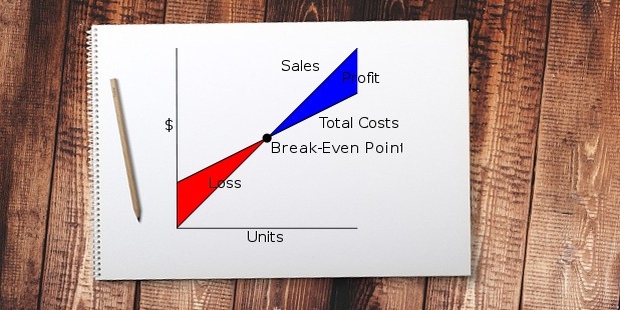3 Ways to Lower the Break-Even Point of Your Business

Break-even point is the point at which the total cost and total revenue of a business are equal: there is no net loss or gain. It is the minimum number of sales the business needs to make to ensure there’s no profit and no loss.
It is one of the most important factors to determine success of any business as it helps in understanding losses, reworking on customer niche, and knowing how to boost profits. Break-even point is dependent on three factors:
- Fixed Costs
- Variable Costs
- Sale Price
Fixed costs are those that are constant. Rents, salaries, fees, depreciation, etc. are some of the fixed costs a business has to incur. Variable costs depend mostly on the number of sales – and tend to vary on the basis of quantity sold. Sale price is the effective selling price of the product the business deals in.

If the quantity sold is more than break-even cost, then there’s profit. If it's less, then there’s a loss. Ways to lower the break-even point of your business are:
1. Raise the Prices
Raising the prices is a straight and simple way of lowering the break-even point. The more margin you have per product, the lesser the break-even point. For example, with same operational costs, a company selling at a price of 100 is likely to reach break-even point faster than one that is selling at a price of 90. Pricing directly effects profits and therefore, lowering the prices can easily help you fix your break-even point in case you’re requiring to sell too much quantity.

It also allows you to focus on the niche of your product and don’t spend outwardly. However, to throw in a word of caution, the competition is really high. It is important to work on two things – one is competitive pricing, and the other is market niche. If your pricing is competitive, if not lowest, and your product is good, it will manage to get sales. If your niche is narrow but there’s not much competition there, you’ll have more conversions and in the end, the result will come out much better.
2. Reduce Fixed Costs

The easiest method is reducing the fixed costs. So, using only the properties that you most definitely need cuts down on rentals; fees and salaries can be checked too by not over-hiring till the business is at a level where it can sustain the extra workforce. Especially in the beginning years, it’s important to reduce all the fixed costs and even some of the variable costs without compromising on quality.
3. Cross-sell and Up-sell

By offering services and products in bundles, one can reduce the break-even point easily. The reason for this is that the variable cost (in terms of marketing per product/service sold) remains the same but you’re able to sell more to the customer than what you originally intended to sell. This way, you’re adding a multiplier to the sales, and recovering more. So the sale price indirectly goes up, and the break-even point keeps coming down.
Lowering the break-even point of the business is one of the essentials of successful entrepreneurship. You need to be able to cut down the costs as effectively as you can so that it is competitive yet not too low. When you’ve succeeded doing the above, you can effectively turn your business successful faster.









